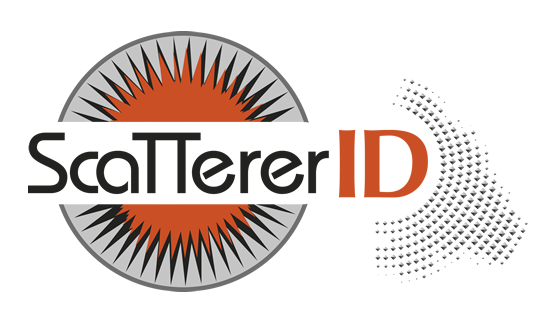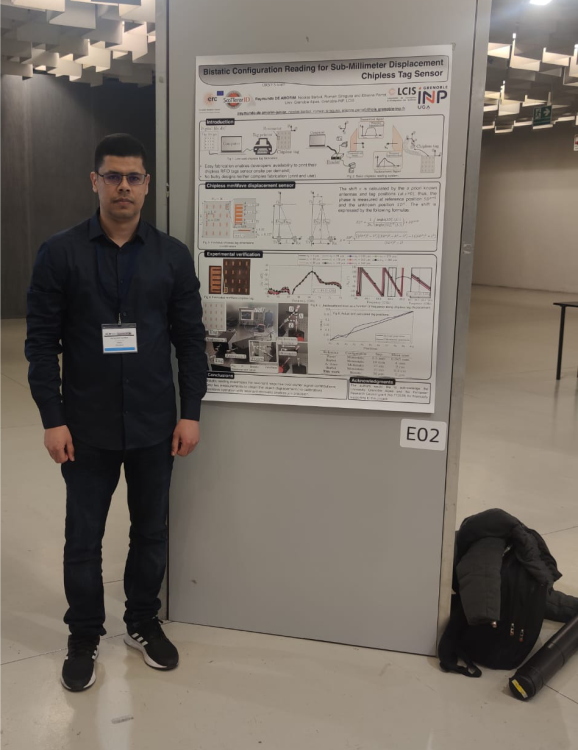Jayakrishnan Methapettyparambu Purushothama Thesis Defense

Etienne Perret named IEEE MTT-S 2019 Outstanding Young Engineer
17 juin 2019
Workshop – Prof. Ke Wu & Mohanan Pezholil as ScattererID special guests
9 octobre 2019Jayakrishnan Methapettyparambu Purushothama Thesis Defense

Jayakrishnan Methapettyparambu Purushothama defended on October 8, 2019 a doctoral thesis of the University Grenoble Alpes entitled « New Generation of Electronically Reconfigurable Passive Microwave Devices Based on Non-volatile CBRAM Switching Technology”.
Jayakrishnan’s work is part of the ScattererID project and will continue as post-doctoral research.
Abstract
This thesis presents new generation of electronically reconfigurable solid-state passive microwave devices based on ‘Conductive Bridging Random Access Memory / Metal – Insulator – Metal’ (CBRAM/MIM) switching technology. The work focuses on overcoming the main drawback of fully passive (that doesn’t need any energy to operate) microwave devices, which is electronic-reconfigurability. Indeed, on conventional microwaves devices, this functionality relies on the use of bulky switching devices requiring a large power, to be operated, and to maintain an impedance state (PIN, MEMS and similar). We propose a technique to make possible to reconfigure passive devices without the requirement of constant power supply (Non-Volatility) to maintain an impedance state. This profound feature distinguishes the CBRAM/MIM switches from classic RF switches as indicated above. Here we present two techniques to design and develop fully passive non-volatile and potentially printable CBRAM/MIM switches integrated into a microwave circuit using simple fabrication steps, on rigid as well as flexible substrates. In particular without using any ‘Clean Room’ technology and with process steps compatible for mass production.
The proof of concept of this technique is presented through experimental realization of a solid state CPW shunt mode RF switch on classic FR-4 and paper substrates. Equivalent electrical models and their advantages in reducing the electromagnetic simulation budget are also demonstrated affirmatively. Then we show the integration of these switches for the development of rewritable chipless RFID tags. These tags are similar to an optical barcode, but with enhanced functionality of electronic re-writeablity, and out of optical line of sight readability. Analysis of possible data encoding strategies and equivalent circuit modelling, for aiding simplified real time application design is also presented herewith. In addition we also demonstrate the application, and advantage of integration of this switching technique in devices like reconfigurable antennas, filters and SPDT switches. These devices could be used for low power stand-alone devices, ranging from low-cost sensors, to IoT and 5G applications. In this research we present our efforts to democratize this switching technology till these electronically-reconfigurable solid-state passive microwave devices could be printed using a common house-hold.
Committee
M. Ke WU
Pr., Polytechnique Montréal, Montréal, Canada.
M. Damien DELERUYELLE
Pr., INSA Lyon, Lyon, France.
M. Mohanan PEZHOLIL
Pr., Cochin University of Science and Technology, Cochin, India.
Mme. Florence PODEVIN
MCF, University Grenoble Alpes, Grenoble, France.
M. Philippe FERRARI
Pr., University Grenoble Alpes, Grenoble, France.
M. Etienne PERRET
MCF, University Grenoble Alpes, Grenoble, France.
M. Arnaud VENA
MCF, University of Montpellier, Montpellier, France.
M. Brice SORLI
MCF, University of Montpellier, Montpellier, France.
Date
October 8, 2019 – 14.00
Location
LCIS laboratory, Valence, France / ESISAR – Grenoble INP, Room A042


